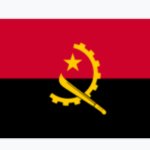Benin, formerly known as Dahomey, is a country located in West Africa. It is bordered by Togo to the west, Nigeria to the east, Burkina Faso to the north, and Niger to the northeast. The Bight of Benin, an inlet of the Atlantic Ocean, lies to the south.
Benin has a long and rich history. The earliest known inhabitants of the region were the Nok people, who lived there from around 1000 BC to 300 AD. The Nok were skilled metalworkers and potters. In the 12th century, the Edo people founded the Kingdom of Benin, which became one of the most powerful and prosperous kingdoms in West Africa. The kingdom was known for its art and architecture, especially its bronze sculptures.
In the 19th century, Benin was conquered by the French and became part of French West Africa. Benin gained its independence in 1960. Since then, it has been a multi-party democracy.
Benin is a small country, but it is home to a diverse population of over 12 million people. The official language is French, but many people also speak local languages such as Fon, Yoruba, and Bariba. The majority of the population is Christian, but there is also a significant Muslim minority.
Benin is a poor country, but it has made significant progress in recent years. The economy is growing, and the government is investing in education and healthcare. Benin is also a popular tourist destination, thanks to its rich history and culture.
Here are some of the things Benin is famous for:
- The Kingdom of Benin: The Kingdom of Benin was a powerful and prosperous kingdom that existed from the 12th to the 19th centuries. It was known for its art and architecture, especially its bronze sculptures.
- The Benin Bronzes: The Benin Bronzes are a collection of over 3,000 bronze sculptures that were created by the artists of the Kingdom of Benin. They are considered to be some of the finest examples of African art.
- The Ouidah Slave Route: The Ouidah Slave Route is a UNESCO World Heritage Site that commemorates the history of the Atlantic slave trade. The route includes the town of Ouidah, which was a major slave trading port in the 17th and 18th centuries.
- Pendjari National Park: Pendjari National Park is a wildlife sanctuary located in the north of Benin. It is home to a variety of animals, including elephants, lions, and giraffes.
- Ganvie Floating Village: Ganvie is a floating village located on Lake Nokoué. It is the largest floating village in Africa and is home to over 20,000 people.
Music and Dancing, Food, Dress and Marriage
The culture of Benin is a diverse and vibrant blend of traditional African and French influences. The country is home to over 40 ethnic groups, each with its own unique customs and traditions.
Music and dancing are an important part of Beninese culture. Traditional music is often accompanied by drumming and dancing, and is used to celebrate special occasions, such as weddings and festivals. Some of the most popular traditional dances include the Agbadja, the Sakpata, and the Gelede.
Food in Benin is also a reflection of the country’s diverse culture. The cuisine is a mix of West African and French dishes, and includes a variety of meats, fish, vegetables, and fruits. Some of the most popular dishes include fufu, a pounded cassava dish; egusi soup, a thick soup made with melon seeds; and akpan, a steamed corn cake.
Dress in Benin is also influenced by both traditional African and French styles. Men typically wear loose-fitting trousers and shirts, while women wear brightly colored dresses or skirts. Traditional dress is often worn for special occasions, such as weddings and festivals.
Marriage in Benin is a complex and important social institution. The traditional marriage ceremony is a long and elaborate affair, and involves a series of steps, such as the negotiation of the bride price, the exchange of gifts, and the performance of traditional rituals.
Here are some specific examples of cultural practices in Benin:
- The Fon people of Benin have a tradition of carving wooden masks, which are used in religious ceremonies and dances.
- The Yoruba people of Benin have a tradition of storytelling, which is passed down from generation to generation.
- The Bambara people of Benin have a tradition of weaving, and their textiles are known for their intricate patterns and designs.
- The Bariba people of Benin have a tradition of dyeing cloth, and their indigo-dyed fabrics are particularly famous.


Benin is a fascinating country with a rich and diverse culture. If you are interested in learning more about Beninese culture, I recommend visiting the country or reading one of the many books that have been written about it.








